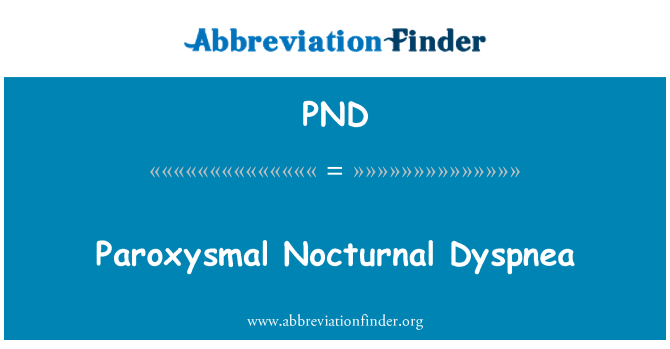PND Album Covers - Visualizing A Night's Struggle
Sometimes, a truly difficult experience, something that shakes you awake in the quiet of the night, can find its voice in art. We are going to talk about a medical issue called Paroxysmal Nocturnal Dyspnea, often called PND, and think about how its stark reality could be shown on conceptual "pnd album covers." It is a way, you see, to give a face to something that is quite invisible to many, a way to make a very personal battle something that others might grasp, even if just a little.
This condition, PND, is a sudden and rather unwelcome visitor that pulls people from their slumber with a gasping need for air. It is not just a little breathlessness; it is a profound sensation of not being able to take in enough air, sometimes with a cough that just will not quit. It tends to appear when someone is resting, often several hours after they have drifted off to sleep, which is that, a very unsettling time for such a dramatic event to happen.
So, considering these moments of startling wakefulness and intense breath hunger, what sort of visual stories might "pnd album covers" tell? How would artists capture that feeling of being suddenly ripped from peace into a struggle for each breath? We can think about the colors, the shapes, the overall mood that could help express this quite distressing part of life for those who live with it, giving it a sort of visual presence.
- Kendrick Lamar A Chain
- Charlize Theron Vin Diesel
- Evelyn Lozada On Basketball Wives
- Kentucky Derby Jockey Payout
- J Lo Abs
Table of Contents
- What Exactly is PND?
- How Does PND Show Up on Conceptual PND Album Covers?
- Is PND Different from Other Breathing Troubles for PND Album Covers?
- What Might a PND Album Cover Feel Like?
- Why Explore PND Through PND Album Covers?
- What Visual Elements Could Define PND Album Covers?
- When Do These Episodes Happen, and How Do They Impact PND Album Covers?
- What's the Connection to "Cardiac Asthma" on PND Album Covers?
What Exactly is PND?
Paroxysmal Nocturnal Dyspnea, or PND for short, describes a very specific kind of shortness of breath. It is characterized by being jolted awake while sleeping, suddenly finding yourself gasping for air. This feeling is not just a little bit out of breath; it is a rather strong sensation of being unable to get enough oxygen, almost like you are suffocating, and often, it comes with a nagging cough. This experience is, in fact, a classic indicator that someone might be dealing with heart failure. It is a sign that should definitely prompt a visit to a medical professional, because it points to something quite serious happening within the body. The condition is not something that happens when you are active; it strikes when you are supposed to be at your most relaxed, when your body is resting and recuperating. This makes it particularly distressing for people, as it robs them of peaceful rest, which is really important for overall well-being. So, it is a very sudden and severe attack of breathing trouble that just shows up without warning in the quiet of the night.
How Does PND Show Up on Conceptual PND Album Covers?
Thinking about how to visually represent PND on "pnd album covers" means trying to capture that abruptness, that feeling of being pulled from a calm state into a desperate struggle. You might see imagery that suggests a sudden shift, perhaps from deep, tranquil blues or purples to jagged, anxious reds or stark whites. The gasping for air could be shown through distorted faces, or perhaps a figure with an open mouth, a silent scream for oxygen. The feeling of suffocation, that deep, unsettling pressure, might be conveyed by tightly packed spaces, a sense of confinement, or even shadowy figures pressing in. It is almost like a visual punch, something that hits you with the same unexpected force as the condition itself. So, a conceptual "pnd album cover" would likely use sharp contrasts and unsettling compositions to convey the shock and distress of waking up unable to breathe, trying to pull in air when it feels like none is there.
Is PND Different from Other Breathing Troubles for PND Album Covers?
Yes, PND stands apart from other types of breathing difficulties, and this distinction is something that could be subtly, or even overtly, highlighted on "pnd album covers." Unlike a similar condition called orthopnea, where a person experiences shortness of breath when lying down but is awake, PND happens only when someone is asleep. It is the act of being awakened by the breathlessness that defines it. This means a visual representation on an album cover might emphasize the transition from a state of unconsciousness to a sudden, jarring awareness of breathlessness. Perhaps a sleeping figure, calm and still, is suddenly disrupted by an explosion of chaotic lines or a burst of unsettling color. The contrast between the peaceful sleep and the sudden, startling jolt awake is key. So, while orthopnea might be depicted with a person struggling while trying to rest, a "pnd album cover" would focus on the moment of awakening, the abruptness of that shift from quiet slumber to a desperate fight for air, which is a very particular kind of distress.
- Justin Bieber With Blonde Hair
- Hailee Steinfeld Leg
- Sidewalk Angels Rob Thomas
- Jessica Quintanilla 2024
- 1972 Rolling Stones Tour
What Might a PND Album Cover Feel Like?
If we were to touch a "pnd album cover," what emotions would it bring forth? It would likely feel rather heavy, perhaps even a bit oppressive, reflecting the physical and emotional burden of the condition. The raw experience of waking up, gasping for breath, is one of pure alarm and discomfort. An album cover aiming to capture this might use textures that seem rough or stifling, colors that feel muted or dark, punctuated by sudden, sharp highlights. It is about conveying that deep, primal need for air when your body feels like it is failing you. The visual language would need to speak to that feeling of suffocation, that desperate struggle in the quiet of the night. So, it would not be a gentle image; it would be one that communicates a sense of urgency and profound unease, a visual representation of a body fighting for its most basic function, which is really quite a powerful thing to try and show.
Why Explore PND Through PND Album Covers?
Using the concept of "pnd album covers" to explore a medical condition like PND offers a unique way to connect with a challenging experience. Art, in its many forms, has a remarkable ability to express things that are hard to put into words, and a visual medium like an album cover can speak volumes. By creating these conceptual covers, we can bring a very personal and often frightening struggle into a more public view. It is a way to build a bridge of understanding, allowing those who have never experienced PND to get a glimpse into its reality. It can also be a source of validation for those who live with it, showing them that their experience is seen and acknowledged. So, these "pnd album covers" could serve as powerful tools for awareness, sparking conversations and fostering a deeper sense of empathy for what people go through when dealing with this specific kind of breathing trouble. It is, in a way, about transforming an invisible struggle into something tangible and relatable, which is pretty important for helping people feel less alone.
What Visual Elements Could Define PND Album Covers?
When thinking about the specific visual elements that could truly define "pnd album covers," a few ideas come to mind that really capture the essence of the condition. Darkness, perhaps with deep, unsettling shadows, could represent the night and the feeling of being overwhelmed. A sense of confinement, like a figure trapped within a small space or by unseen forces, might convey the suffocation. Jagged lines or sharp, fragmented shapes could symbolize the sudden, violent awakening and the desperate gasping. A single, weak light source, maybe a tiny glow in an otherwise dark scene, could represent the fading hope for a full breath. A clock, its hands moving slowly or erratically, could hint at the hours passing before an episode strikes, or the timeless struggle during one. It is about creating a mood of unease and struggle, a visual narrative of a body fighting for air. So, these covers would probably use stark imagery and a somewhat unsettling color palette to really drive home the feeling of a sudden, desperate battle for breath, which is a rather impactful way to communicate such an internal experience.
When Do These Episodes Happen, and How Do They Impact PND Album Covers?
The timing of PND episodes is a rather specific detail that could heavily influence the mood and story told on "pnd album covers." These attacks usually happen several hours after a person has fallen asleep. This means there is often a period of peaceful, undisturbed rest before the sudden onset of breathlessness. This contrast, the shattering of tranquility, is a powerful narrative element. An album cover might depict a scene of serene slumber, perhaps a calm bedroom, only to have it abruptly fractured by a visual representation of chaos or distress. It is the peace of sleep being violently interrupted by the body's own struggle. So, a conceptual "pnd album cover" could visually explore that transition from deep rest to sudden alarm, showing the moment the quiet of the night is broken by a desperate gasp for air. This specific timing, this interruption of deep sleep, really adds a layer of vulnerability and unexpectedness to the condition, which is something that could be visually striking.
What's the Connection to "Cardiac Asthma" on PND Album Covers?
PND, or Paroxysmal Nocturnal Dyspnea, is sometimes referred to as "cardiac asthma," and this alternative name gives us another angle for conceptual "pnd album covers." While it is not true asthma, the term "cardiac asthma" points to the fact that the shortness of breath can feel similar to an asthma attack, but it stems from a heart issue rather than a lung issue. This connection could be shown visually by depicting a feeling of constriction or tightness, almost as if something is squeezing the chest. Perhaps imagery of a heart struggling, or a figure clutching their chest, could convey this aspect. It is about the feeling of being unable to expand your lungs fully, even though the root cause is with the heart's function. So, a "pnd album cover" might incorporate elements that suggest both respiratory distress and cardiac strain, perhaps using visual metaphors for pressure or blockage within the body. This connection to "cardiac asthma" really highlights the dual nature of the distress, making it a rather complex feeling to portray.
In essence, exploring "pnd album covers" as a concept allows us to visually interpret the intense and often frightening experience of Paroxysmal Nocturnal Dyspnea. We have considered how the sudden awakening, the severe shortness of breath, and the feeling of suffocation could be translated into powerful imagery. We also looked at how distinguishing PND from other breathing issues, and understanding its typical timing, might shape these artistic expressions. Finally, the connection to "cardiac asthma" offers yet another layer for creative visualization, all aimed at giving a voice and a face to a condition that affects many, bringing a deeper sense of empathy and understanding.
- Kats Bf Euphoria
- 1972 Rolling Stones Tour
- Wired Sports Bra
- Kyle Abrams Love Is Blind
- Hoda Kotb Pictures

PND says f*** Tory Lanez [UPDATE: PND says he’s sorry. Tory Lanez says

Participa en la creación del Plan Nacional de Desarrollo 2019-2024

definisi PND: Paroxysmal Nocturnal Dyspnea - Paroxysmal Nocturnal Dyspnea